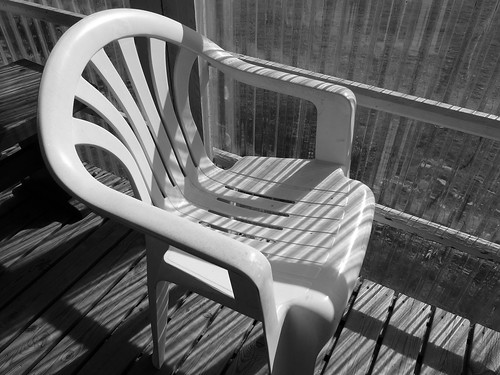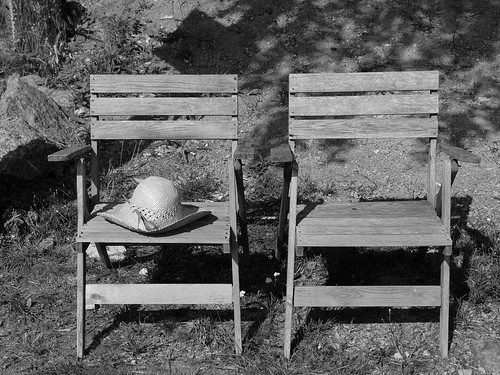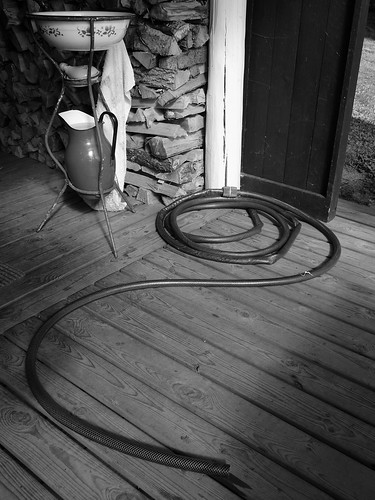Here are three photographs in which I have studied forms, shades and textures, the important aspects of b&w photography. I don't think that any of these images would have worked in color, but in b&w each does seem to have something to say.
What is great about the LX3 camera is the ability to see a preview of the b&w image on screen, so you learn a lot by just looking. On the other hand, I'm not sure whether this can become a handicap of some sort in the long run. Relying on the camera to show the b&w image may not be the best way of learning to see in b&w.
But at least the LX3 makes it easy to start shooting in b&w. All these images were taken with the "dynamic b&w" film mode, with contrast and noise reduction turned down by -1.
Skate Park
3 hours ago






6 comments:
I like all three of them and the two from your last post as well.
I guess the only problem with setting the camera to B&W is, that you can't get results that you could get by using color filters in Photoshop.
I have often speculated about buying real color filters and trying filtered B&W in-camera, just like in the old days. Would be fun, and it should also give less noise than the software method does in extreme cases like "high-contrast red" of "high-contrast blue".
@Andreas: My attitude towards the in-camera b&w mode is the same as using a certain type of film. The mode limits the possibilities, but on the other hand it offers the possibility to go deep with one set of the parameters.
By giving up the postprocessing step I hope to gain something else, in terms of "seeing" in b&w. At least this seems a nice experiment to try out.
"Hardware" filters wouldn't take anything away from that. I suppose there are no filters to directly mount on the LX3, but cheap Cokin filters of the smallest size could be held in front of the lens easily. I suppose it would give you lots of flexibility and much more latitude in terms of noise. Heck, maybe I should try it myself :)
I have an extension tube (46 mm diameter) for the LX3, for using polarizing, ND etc. filters with the camera. Haven't used it much, but perhaps I'll have a go at this.
Really love these b/w shots. Contemplating getting the LX3 in addition to my current camera line-up. Need a small prosumer that's more pocketable. Looks like it's a great choice.
@Janet: The LX3 does the job nicely, but it is good to check it out in a shop before buying. One camera does not fit everyone.
Post a Comment